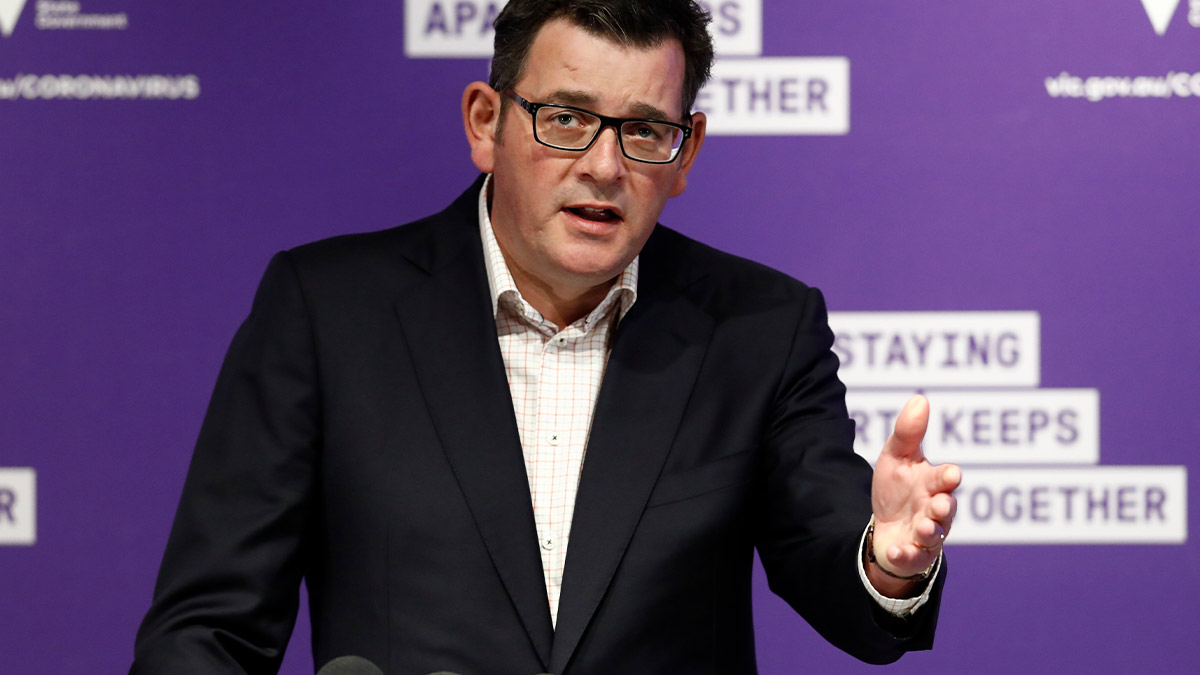Victoria’s COVID-19 lockdown will result in a ‘material setback’ to the broader economy

Victoria's economy braces for impact after Premier Daniel Andrews announces further lockdown restrictions. (Getty Images)
Markets were starting to expect it, and Victoria Premier Daniel Andrews yesterday confirmed it: the metropolitan Melbourne area will go into a six-week lockdown as authorities scramble to contain a serious COVID-19 outbreak.
And while a domestic recession was already deemed inevitable, the enforced closure of Australia’s second-largest state economy means economists will have to reset the baseline growth forecasts for the June quarter.
Included in that group will be the economists at the Reserve Bank of Australia, which made its monthly policy statement shortly before Daniels’ announcement and left rates on hold at 0.25 per cent (as expected).
Despite the obvious headwinds, the central bank did its best to put a positive spin on things, highlighting that conditions have “stabilised recently” and the resulting downturn “has been less severe than earlier expected”.
However, the latest events in Victoria illustrate the challenges still faced by policy makers due to the unpredictable nature of the pandemic’s impact.
Victoria set to drag on growth
Speaking with SBS following the RBA announcement, IFM Investors chief economist Alex Joiner said the prospect of a Melbourne lockdown would halt the recovery’s momentum.
“The Victorian economy makes up around 23 per cent of the Australian economy, so if there’s going to be further lockdowns that broaden out to Melbourne CBD, that would be a material setback to small businesses and the broader economy,” he said.
Joiner added that a number of important economic indicators that were showing tentative signs of recovery could again lost momentum in Q3.
“What we might observe over the next four to six weeks is those economic indicators across states start to diverge more than they have to date,” Joiner said.
“Most notably in the labour market, but also retail sales data and probably confidence gauges as well, so that would definitely be a negative for the Victorian economy.”
RBA going nowhere
With another cloud now hanging over the economic recovery, markets were already fully priced for the Reserve Bank to hold rates at their current lows of 0.25 per cent, as it continues to provide ultra-supportive policy settings during the recession.
In that sense, Joiner said the bank’s relative sense of optimism was what stood out in the latest statement.
“I think the RBA’s been pleasantly surprised that things haven’t deteriorated as badly,” Joiner said.
He pointed to the bank’s observation around overall hours worked (an important employment indicator), where RBA governor Phil Lowe noted the decline in May was “less than previously thought likely”.
“I think they were looking for 20 per cent fall and probably got more like a 10 per cent decline, so the outlook isn’t as bad as expected,” Joiner said.
“But the caveat is the future is highly uncertain, more so than normal, and we’re seeing that domestically and globally.
“The outbreak in Victoria has created uncertainty, but there’s also the US. Markets look to the US as driver of global recovery, but cases there continue to accelerate. So the RBA is keeping the glass half full, but it’s highly uncertain how things will go.”
With that in mind, investors can expect interest rates to remain anchored in Australia for the foreseeable future.
Looking ahead, Joiner pointed to comments from RBA deputy governor Guy Debelle last week who said it would be “some years” before the cash rate moves.
In that context, he predicted that a move higher in benchmark interest rates was unlikely to occur until late 2022 or early 2023.
Related Topics
UNLOCK INSIGHTS
Discover the untold stories of emerging ASX stocks.
Daily news and expert analysis, it's free to subscribe.
By proceeding, you confirm you understand that we handle personal information in accordance with our Privacy Policy.








